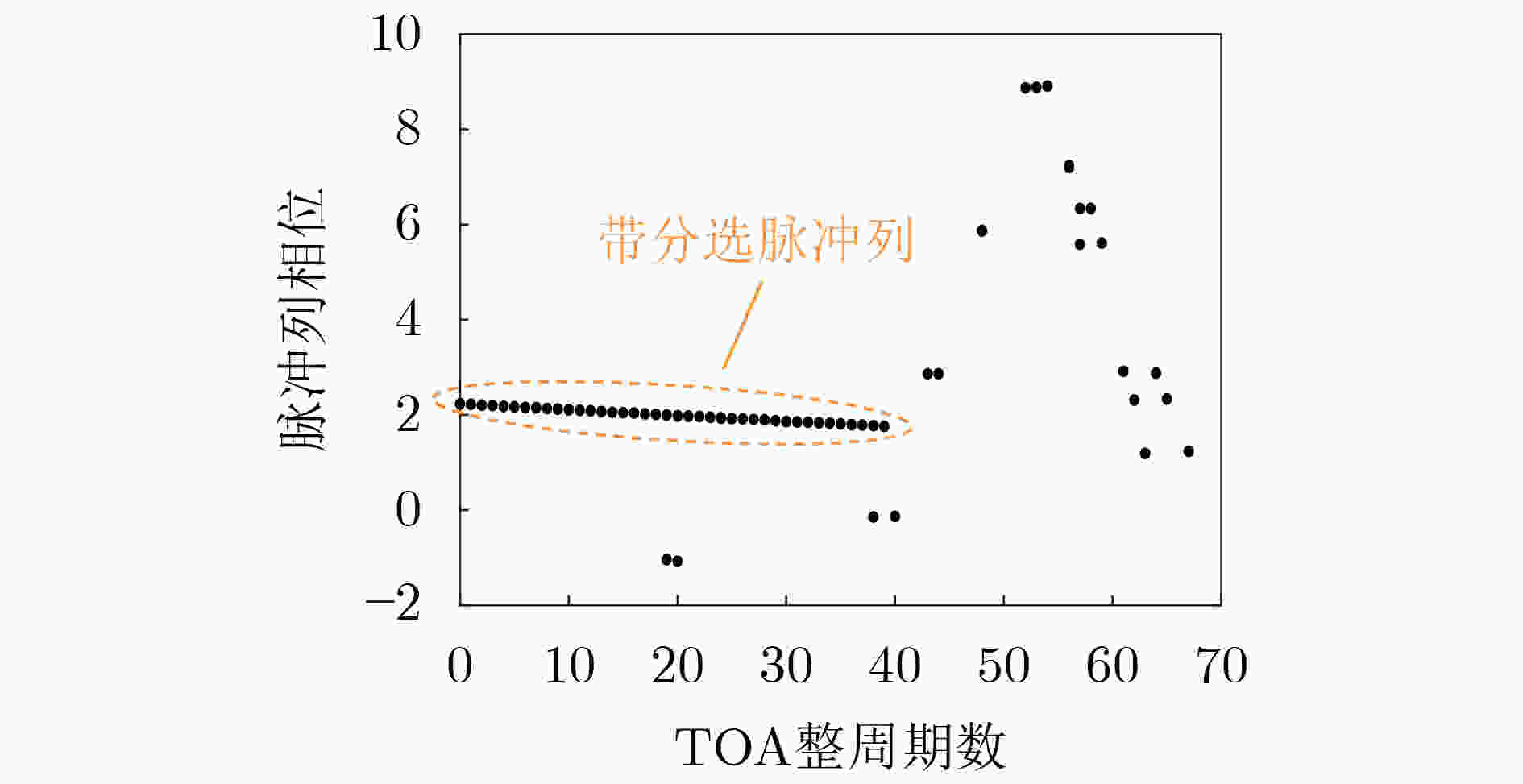| [1] |
WILEY R G, 吕跃广, 译. 电子情报(ELINT): 雷达信号截获与分析[M]. 北京: 电子工业出版社, 2008: 242–255.WILEY R G, LV Yueguang, translation. ELINT: The Interception and Analysis of Radar Signals[M]. Beijing: Publishing House of Electronics Industry, 2008: 242–255.
|
| [2] |
赵国庆. 雷达对抗原理[M]. 2版. 西安: 西安电子科技大学出版社, 2012: 100–107.ZHAO Guoqing. Principle of Radar Countermeasure[M]. 2nd ed. Xi’an: Xidian University Press, 2012: 100–107.
|
| [3] |
周一宇, 安玮, 郭福成, 等. 电子对抗原理与技术[M]. 北京: 电子工业出版社, 2014: 93–125.ZHOU Yiyu, AN Wei, GUO Fucheng, et al. Principles and Technologies of Electronic Warfare System[M]. Beijing: Publishing House of Electronics Industry, 2014: 93–125.
|
| [4] |
贺平. 雷达对抗原理[M]. 北京: 国防工业出版社, 2016: 88–108.HE Ping. Radar Countermeasure Principle[M]. Beijing: National Defense Industry Press, 2016: 88–108.
|
| [5] |
何明浩, 韩俊. 现代雷达辐射源信号分选与识别[M]. 北京: 科学出版社, 2016: 32–48.HE Minghao and HAN Jun. Signal Sorting and Recognition of Modern Radar Emitter[M]. Beijing: Science Press, 2016: 32–48.
|
| [6] |
胡德秀, 赵拥军, 陈世文, 等. 雷达辐射源信号分析与处理[M]. 北京: 清华大学出版社, 2019: 15–17.HU Dexiu, ZHAO Yongjun, CHEN Shiwen, et al. Signal Analysis and Processing of Radar Emitter[M]. Beijing: Tsinghua University Press, 2019: 15–17.
|
| [7] |
隋金坪, 刘振, 刘丽, 等. 雷达辐射源信号分选研究进展[J/OL]. 雷达学报, 2022, 11(3): 418–433.SUI Jinping, LIU Zhen, LIU Li, et al. Progress in radar emitter signal deinterleaving[J/OL]. Journal of Radars, 2022, 11(3): 418–433.
|
| [8] |
赵登平. 世界海用雷达手册[M]. 2版. 北京: 国防工业出版社, 2012: 257–259.ZHAO Dengping. Handbook of World Marine Radar[M]. 2nd ed. Beijing: National Defense Industry Press, 2012: 257–259.
|
| [9] |
姜道安, 石荣. 航天电子侦察技术[M]. 北京: 国防工业出版社, 2016: 105–108.JIANG Daoan and SHI Rong. Aerospace Electronic Reconnaissance Technique[M]. Beijing: National Defense Industry Press, 2016: 105–108.
|
| [10] |
中航工业雷达与电子设备研究院. 机载雷达手册[M]. 4版. 北京: 国防工业出版社, 2013: 136.AVIC Radar and Electronic Equipment Research Institute. Airborne Radar Handbook[M]. 4th ed. Beijing: National Defense Industry Press, 2013: 136.
|
| [11] |
SKOLNIK M I, 南京电子技术研究所, 译. 雷达手册[M]. 3版. 北京: 电子工业出版社, 2010: 53–56.SKOLNIK M I, Nanjing Institute of Electronic Technology, translation. Radar Handbook[M]. 3rd ed. Beijing: Publishing House of Electronics Industry, 2010: 53–56.
|
| [12] |
张锡祥, 肖开奇, 顾杰. 新体制雷达对抗导论[M]. 北京: 北京理工大学出版社, 2010: 103–106.ZHANG Xixiang, XIAO Kaiqi, and GU Jie. Introduction to New System Radar Countermeasure[M]. Beijing: Beijing University of Technology Press, 2010: 103–106.
|
| [13] |
MELVIN W L and SCHEER J A. Principles of Modern Radar: Advanced Techniques[M]. Edison, NJ: SciTech Publishing, 2013: 231–234.
|
| [14] |
MELVIN W L and SCHEER J A. Principles of Modern Radar: Radar Applications[M]. Edison, NJ: SciTech Publishing, 2014: 204–206.
|
| [15] |
RICHARDS M A, SCHEER J A, and HOLM W A. Principles of Modern Radar: Basic Principles[M]. Edison, NJ: SciTech Publishing, 2010: 634–637.
|
| [16] |
MARDIA H K. New techniques for the deinterleaving of repetitive sequences[J]. IEE Proceedings F:Radar and Signal Processing, 1989, 136(4): 149–154. doi: 10.1049/ip-f-2.1989.0025
|
| [17] |
MILOJEVIĆ D J and POPOVIĆ B M. Improved algorithm for the deinterleaving of radar pulses[J]. IEE Proceedings F:Radar and Signal Processing, 1992, 139(1): 98–104. doi: 10.1049/ip-f-2.1992.0012
|
| [18] |
NISHIGUCHI K and KOBAYASHI M. Improved algorithm for estimating pulse repetition intervals[J]. IEEE Transactions on Aerospace and Electronic Systems, 2000, 36(2): 407–421. doi: 10.1109/7.845217
|
| [19] |
LIU Zhangmeng. Online pulse deinterleaving with finite automata[J]. IEEE Transactions on Aerospace and Electronic Systems, 2020, 56(2): 1139–1147. doi: 10.1109/TAES.2019.2925447
|
| [20] |
LIU Zhangmeng and YU P S. Classification, denoising, and deinterleaving of pulse streams with recurrent neural networks[J]. IEEE Transactions on Aerospace and Electronic Systems, 2019, 55(4): 1624–1639. doi: 10.1109/TAES.2018.2874139
|
| [21] |
LI Xueqiong, LIU Zhangmeng, and HUANG Zhitao. Deinterleaving of pulse streams with denoising autoencoders[J]. IEEE Transactions on Aerospace and Electronic Systems, 2020, 56(6): 4767–4778. doi: 10.1109/TAES.2020.3004208
|
| [22] |
LIU Zhangmeng. Recognition of multifunction radars via hierarchically mining and exploiting pulse group patterns[J]. IEEE Transactions on Aerospace and Electronic Systems, 2020, 56(6): 4659–4672. doi: 10.1109/TAES.2020.2999163
|
| [23] |
LIU Zhangmeng. Pulse deinterleaving for multifunction radars with hierarchical deep neural networks[J]. IEEE Transactions on Aerospace and Electronic Systems, 2021, 57(6): 3585–3599. doi: 10.1109/TAES.2021.3079571
|
| [24] |
MITRA S K. Digital Signal Processing: A Computer-Based Approach[M]. 2nd ed. Boston: McGraw-Hill, 2001: 33–52.
|
| [25] |
SMITH III J O. Spectral Audio Signal Processing[M]. USA: W3K Publishing, 2011: 7–112.
|
| [26] |
DUDA R O and HART P E. Use of the Hough transformation to detect lines and curves in pictures[J]. Communications of the ACM, 1972, 15(1): 11–15. doi: 10.1145/361237.361242
|
| [27] |
ILLINGWORTH J and KITTLER J. A survey of the Hough transform[J]. Computer Vision, Graphics, and Image Processing, 1988, 44(1): 87–116. doi: 10.1016/S0734-189X(88)80033-1
|






 下载:
下载:






 下载:
下载:
